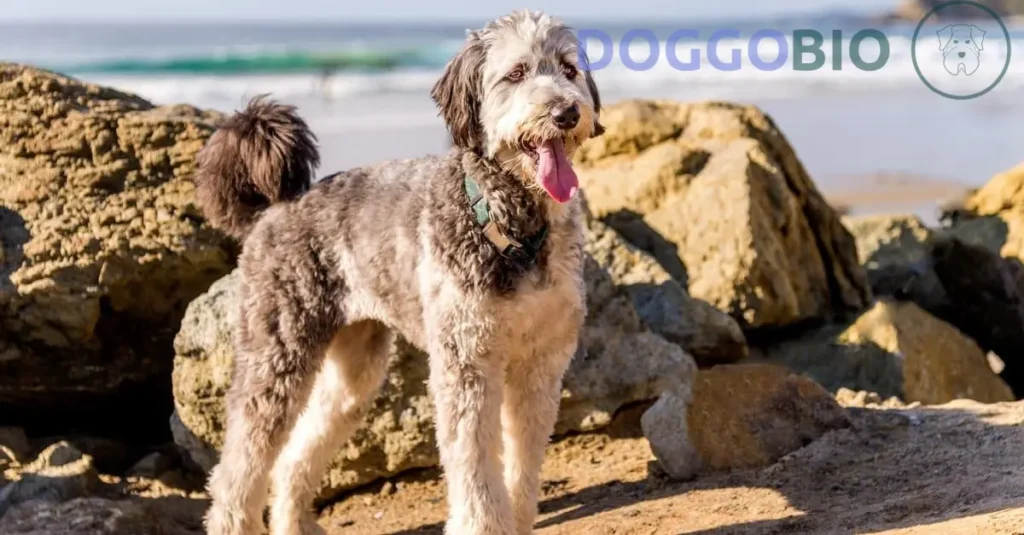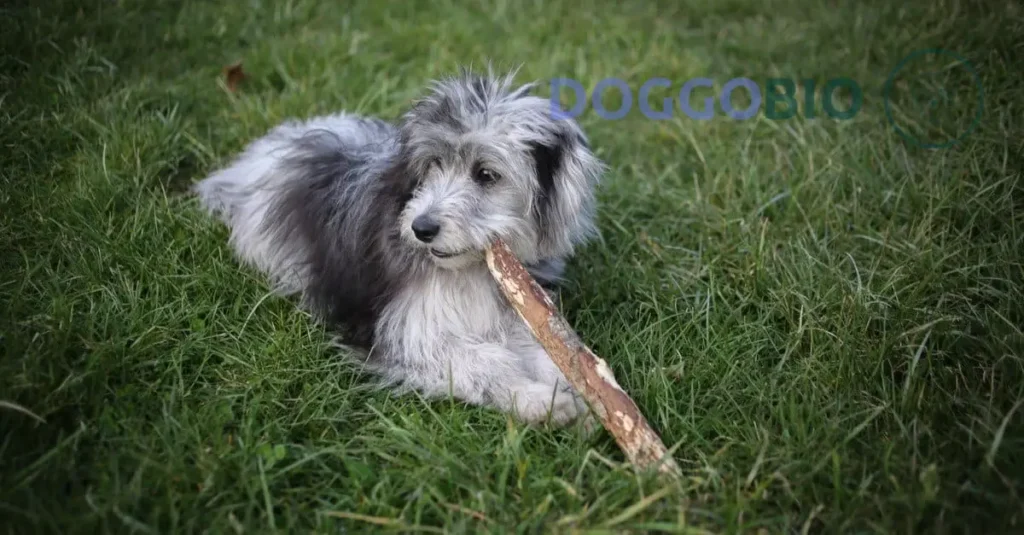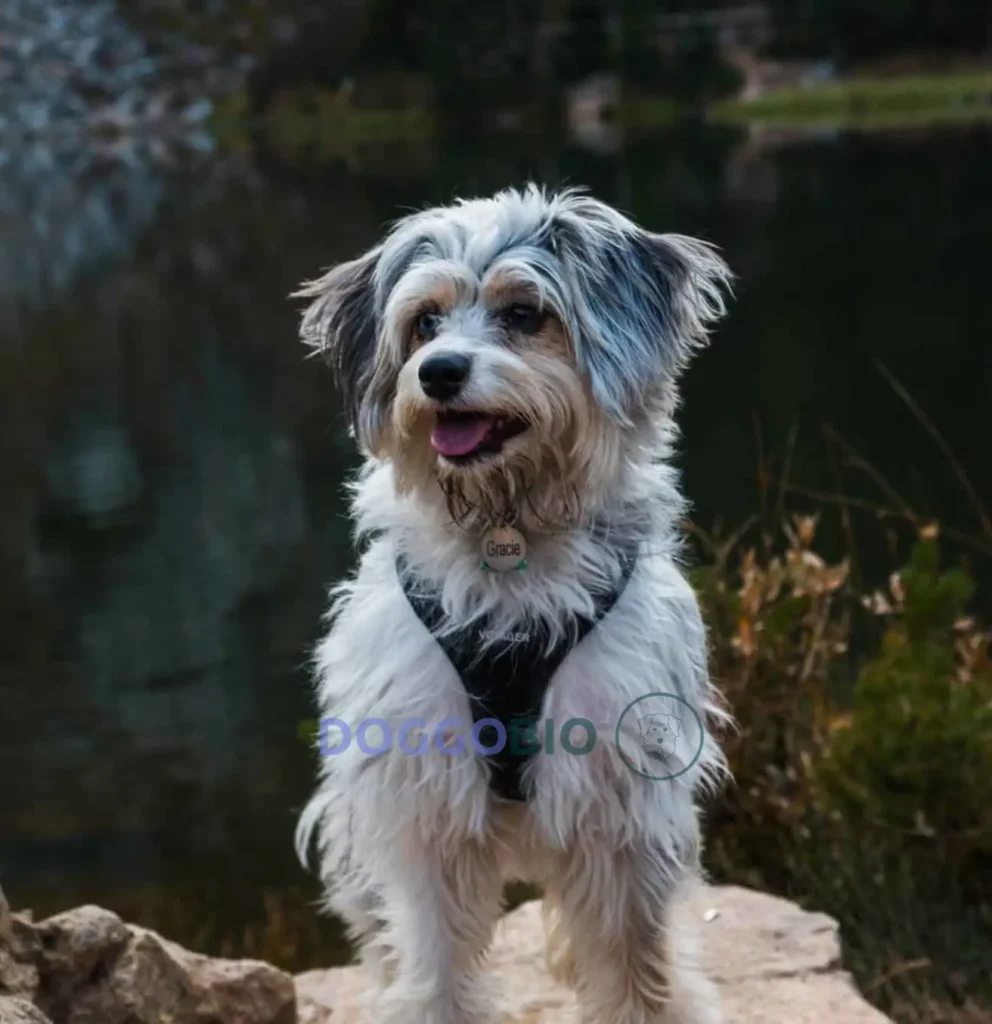Welcome to the fascinating world of the Aussiedoodle, a captivating crossbreed that has been gaining popularity among dog enthusiasts worldwide. One of the most common questions potential dog owners ask about this delightful breed is, “Do Aussiedoodles shed?” This query is crucial for anyone looking to bring a four-legged companion into their home, especially those with allergies or a desire for a low-maintenance pet.
So ” Do Aussiedoodles Shed?” The answer is yes. In this article, we will explore the shedding tendencies of Aussiedoodles and provide you with a comprehensive understanding of what to expect when it comes to their fur and grooming for your dog. So, if you’re curious about whether Aussiedoodles are low-shedding companions, read on to discover the answer and gain valuable insights into their care.
Do Aussiedoodles shed?
Yes, Aussiedoodles shed, but the shedding amount varies based on the dog’s characteristics and coat type. Curlier-coated Aussiedoodles generally shed less than those with straighter coats. Keep this in mind when considering bringing an Aussiedoodle into your home.
Aussiedoodle coats types
Aussiedoodles come in various coat types, similar to other Doodles. Combining the genetics of the Australian Shepherd and Poodle, their appearance and shedding tendencies can be diverse. Let’s delve into the details.

1. Curly coat
The highly sought-after Aussiedoodle coat type with minimal shedding is the curly coat. Resembling their Poodle parent, these Aussiedoodles usually have a single coat of plush, curly hair.
Although they shed the least, their curly coat demands the most maintenance among the three coat types. The textured curls are prone to tangling and can trap loose hair, dirt, and debris, leading to matting. Daily brushing is a must for curly coat Aussiedoodles to keep their coat in good shape.
2. Wavy coat
The Aussiedoodle wavy coat is another favored option, showcasing a delightful blend of the straight Australian Shepherd coat and the curly-haired Poodle.
This coat type may or may not be double-layered, but it generally sheds tiny, thanks to the influence of Poodle genetics. The wavy texture makes it easier to maintain than the curly coat, requiring less effort to keep it in good condition.
3. Straight-haired Aussiedoodles
Finally, let’s talk about the straight-coat Aussiedoodle, which primarily takes after the Australian Shepherd’s parents regarding hair. Often, these pups also have an insulating undercoat. The trade-off with this coat type is that it tends to shed more than the curly and wavy coat types, particularly during shedding seasons.
While straight-haired Aussiedoodles are less susceptible to matting, it’s essential to regularly brush out the loose, dead hair that can get trapped beneath the dense layers of their double coat. Doing so allows you to manage the shedding and keep your skin in good shape.
When Does Aussiedoodle Shed?
Aussiedoodles shed differently based on genetics and seasonal changes. They tend to shed more during specific seasons. And yes, like many other breeds, Aussiedoodles go through a puppy coat “blow” as they transition into adulthood. You might notice increased shedding as their new adult coat enters during this phase. Remember, regular grooming and care can help manage shedding during these times.

1. Aussiedoodles Genetics
The shedding tendencies of an Aussiedoodle primarily come down to their genetic makeup and hair type. Hybrid breeds with Poodle influence generally experience less shedding. However, if an Aussiedoodle takes after the Australian Shepherd more, shedding may be more noticeable than those who favor the Poodle parent.
| Generation | Parent Combination | % Australian Shepherd* | % Poodle* |
| F1 Aussiedoodle | Australian Shepherd x Poodle | 50% | 50% |
| F1B Aussiedoodle | F1 Aussiedoodle x Poodle | 25% | 75% |
| F1BB Aussiedoodle | F1B Aussiedoodle x Poodle | 12.5% | 87.5% |
| F2 Aussiedoodle | F1 Aussiedoodle x F1 Aussiedoodle | 50% | 50% |
| F2B Aussiedoodle | F1 Aussiedoodle x F1B Aussiedoodle | 37.5% | 62.5% |
| F2B Aussiedoodle | F2 Aussiedoodle x Poodle | 25% | 75% |
| F3 / Multigen Aussiedoodle | F1B Aussiedoodle or higher x F1B Aussiedoodle or higher | Varies | Varies |
- F1b, F1bb, F2b, and F2bb Aussiedoodles, with a higher percentage of Poodle genetics, are likely to shed the least.
- On the other hand, F1 and F2 Aussiedoodles, having a 50-50 mix of Australian Shepherds and Poodles, may shed more than their curly-haired counterparts.
2. Time of the years
Aussiedoodle shedding can be influenced by the time of year, particularly during seasonal changes from warm to cold or vice versa.
Double-coated Aussiedoodles may undergo increased shedding like their Australian Shepherd counterparts when their coat transitions between seasons. Nevertheless, even straight-haired Aussiedoodles shed less compared to purebred Australian Shepherds.
Despite this advantage, you might still notice more loose hair around the house during seasonal shedding. Regular grooming and maintenance can help manage the shedding and tidy your living space.
3. Puppy coat
Aussiedoodles blow out their puppy coats during their first year, usually between 4 and 6 months old. Their soft puppy coat is replaced by a thicker adult coat that remains consistent throughout life. Some pups transition seamlessly, while others undergo more rapid changes, leading to a different fur texture in adulthood.
What factors influence Aussiedoodle shedding?
Aside from genetic makeup and coat types, Aussiedoodle shedding can also be influenced by various health issues and concerns.

1. Diet
Diet plays a significant role in Aussiedoodle shedding. Poor nutrition can lead to excessive shedding, hair breakage, and even bald spots if essential nutrients are lacking in their diet.
Additionally, sudden changes in diet can also trigger excessive shedding in Aussiedoodles. If you suspect food allergies might be a factor, consulting with your veterinarian can help identify any potential dietary triggers for shedding in your furry companion.
2. Anxiety and stress
Anxiety and stress can impact an Aussiedoodle’s shedding. Feeling anxious or stressed, they might excessively lick or scratch, leading to coat damage and hair loss.
Identifying the cause of their anxiety and working with your vet to develop a management plan can help alleviate shedding caused by stress.
3. Fleas, ticks, and parasites
Fleas, ticks, and parasites can be another reason for excessive shedding in Aussiedoodles. These pesky critters can trigger skin allergies and irritation, increasing shedding.
However, with proper grooming and medications, parasites can be easily prevented or treated, helping to reduce shedding and keep your Aussiedoodle comfortable and healthy.
4. Other Health Issues
In addition to skin and food allergies, other health issues can contribute to excessive shedding in Aussiedoodles. Severe medical conditions might also be a factor. If you observe any unusual changes in your dog’s behavior, such as lethargy or depression, you must promptly schedule an appointment with your vet to address any potential health concerns.
5. Hormonal changes
Hormonal changes, like those during pregnancy or lactation, can affect an Aussiedoodle’s shedding. Once their hormone levels stabilize, shedding should decrease.
6. Weather changes
Weather changes, especially during seasonal transitions or extreme temperatures, can increase shedding in Aussiedoodles. However, this shedding should naturally subside as their coat adjusts to the new weather conditions.
Tips for managing your Aussiedoodle’s shedding

1. Combing
Grooming your Aussiedoodle involves finding the right frequency. Poodles benefit from daily grooming, while Australian Shepherds can be groomed weekly, with more attention during shedding season.
Your Aussiedoodle might need a middle ground, like grooming every couple of days year-round and daily during shedding season. For added safety against matting, daily combing down to the skin is recommended. If your dog has a double coat, use a de-shedding brush less frequently to avoid damaging the undercoat.
2. Brushing Their Teeth
Maintaining your Aussiedoodle’s dental health is crucial. Just like humans, daily teeth brushing is recommended to prevent cavities and dental issues. Additionally, an annual professional cleaning by a veterinarian is advised.
Here’s how to brush your Aussiedoodle’s teeth effectively:
- Familiarize your dog with mouth handling gradually, using positive reinforcement.
- Get a dog-specific toothbrush and toothpaste; never use human toothpaste.
- Introduce the toothbrush slowly, allowing your pup to adjust to the process.
Starting early is key. While brushing, watch for signs of dental problems like bad breath or swollen gums. If your Aussiedoodle resists brushing, consider dental chews and toys as alternatives for dental health maintenance.
3. Triming
Trimming your Aussiedoodle’s nails can be done safely and comfortably with these steps:
- Familiarize your dog with paw handling gradually, starting with gentle petting and treats. Progress to touching their nails as they become more comfortable.
- Avoid cutting into the quick, a pink area with blood vessels at the base of the nail. It’s less visible on dark nails.
- Use sharp, clean nail trimmers to prevent splintering and potential injury.
- Be prepared with cornstarch or flour in case of bleeding. Apply these to stop bleeding, and seek veterinary assistance if bleeding persists.
Follow these steps to ensure your Aussiedoodle’s nails are well-maintained and pain-free.
4. Bathing
Bathing your Aussiedoodle should align with their specific needs:
- Poodles benefit from baths every 4-6 weeks.
- Australian Shepherds should be bathed as required, which can mean longer intervals between baths.
Consider these options:
- Groomer: Regular grooming appointments can simplify the process.
- Signs to Watch: Bathe when you notice an odor or their coat looks dull, dry, or greasy.
Use a dog shampoo for gentle cleansing, lather, and rinse thoroughly. Optionally, apply a dog conditioner or coconut oil.
Baths are also a good opportunity to check for skin or coat issues. If you spot anything unusual, consult your veterinarian for further evaluation.
5. Cleaning Their Ears
Cleaning your Aussiedoodle’s ears can be a pleasant experience for them. Here’s how:
- Use a dog ear wash or apply a small amount of baby oil to a soft cleaning tool (dish cloth, paper towel, cotton pad, cotton ball, or Q-tip).
- Gently flip your dog’s ear onto the top of its head and clean the underside. Avoid inserting anything into the ear canal to prevent harm.
- If you notice excessive earwax or signs of infection like redness, swelling, abnormal discharge, or an unpleasant odor, consult your veterinarian. They can safely and effectively address these issues.
6. Haircut
For the best results, many choose professional groomers for their Aussiedoodle’s haircut. They can achieve a superior finish.
If you prefer DIY grooming, take care not to accidentally cut the skin. Trim your dog’s fur every 4-6 weeks, especially if it’s kept short and not brushed daily to prevent tangling and matting.
Regular grooming appointments may also include nail trims, ear cleaning, and bathing, ensuring all needs are met professionally.
| Visiting a groomer | every four to six weeks |
| Combing | daily |
| Brushing their teeth | daily |
| Trimming their nails | monthly |
| Cleaning their ears | monthly |
| Bathing | once every four to six weeks |
Frequently asked questions
Do Aussiedoodles Have Double Coats?
No, Aussiedoodles generally do not have double coats. Unlike double-coated breeds like the Golden Retriever or German Shepherd, Aussiedoodles typically have a single layer of hair more similar to the Poodle’s skin.
This single coat sheds less than double coats, and shedding is usually less seasonal or intense. The length and texture of the skin may vary, but overall, Aussiedoodles tend to shed less due to their single coat.
Do blue merle Aussiedoodles Shed a lot?
Yes, Blue Merle Aussiedoodles can shed, but the amount of shedding varies depending on their individual genetics and coat characteristics.
Are Aussiedoodles hypoallergenic?
No, Aussiedoodles are not hypoallergenic, as they can shed quite a bit. The debate about hypoallergenic dogs continues, and allergies are often triggered by dander from a dog’s skin, not just fur. Spending time with the specific dog before adoption can help assess potential allergic reactions and avoid later complications.
Do Aussiedoodles get haircuts?
Yes, Aussiedoodles often get haircuts.
Haircuts are practical for most Aussiedoodles because they help manage their coat. While they don’t need to be very short, maintaining a moderate length makes grooming easier. Opting for a long coat is possible, but it will necessitate daily combing to prevent mats, which can be uncomfortable for the dog.
Shaving is not recommended for Aussiedoodles with double coats, as it can damage the coat. However, regular trims are still valuable. Keep in mind that the trimming length should be longer than that of a Poodle since Poodles have a single coat, and Aussiedoodles have a double coat.
Are Aussiedoodles High Maintenance?
Yes, Aussiedoodles are generally considered high maintenance.
Aussiedoodles inherit high-energy levels and grooming needs from their parent breeds (Poodles and Australian Shepherds). They require substantial daily exercise, and their grooming demands can include daily combing and regular trims, especially if they have more Poodle-like fur. Managing their energy and coat care can be quite demanding.
Conclusion
In conclusion, do Aussiedoodles Shed? Dhedding tendencies in Aussiedoodles can vary based on genetics and coat type. Individual differences exist while they are generally low-shedding due to their Poodle heritage. Regular grooming and considering F1B or F2B variations can minimize shedding.
Ultimately, their intelligence and affectionate nature make them wonderful companions, making shedding a minor consideration compared to the joy they bring to your life.

Pingback: Blue Merle Aussiedoodle: Joy of a Unique Pal 2024
Pingback: Are Aussies Hypoallergenic? Discover Allergen Secrets 2024